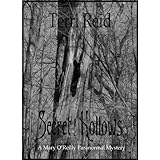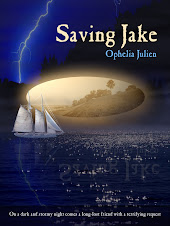A writer friend of mine who publishes under the name Scarlett Dean had a book out several years ago titled Unfinished Business.
The premise is that objects can be haunted and that anyone who brings
such an object into his or her home also brings along the spirit
attached to it.
Apparently,
for those of us who are open to the concepts of the supernatural, this
is more than just a premise. John Zaffis, for instance, a paranormal
investigator, has his own TV series called "Haunted Collector," a show
that deals with disturbed objects and the folks who are being disturbed
by them. Just recently, I saw a special entitled "Possessed Possessions"
that was rather like a haunted Antiques Road Show, except it was on
board the very haunted Queen Mary and the evaluations were not for
current worth, but for current supernatural manifestations. People
brought in their auction-bought antique dolls, inherited porcelain tea
cups, life-size wax statues of Rudolph Valentino, and even a 19th
century Colt once owned by a Texas Ranger. The psychics and other
investigators would give a reading on each object and then ask the
owners questions to ascertain the accuracy of their readings.
The one question they never asked was "And why exactly did you feel the need to have this in your house?"
I can understand inherited items. I don't get purchasing something as
creepy as an antique doll that you subsequently relegate to the storage
facility because you don't want to have the thing anywhere near you.
Of
course, I am being far too harsh. There are a number of resale and
thrift shops around my house, and one day, I became enamored of a set of
nesting porcelain bowls. They were a beautiful peach color with
decorative green leaf work on one side, and they were both stunning and
useful. My husband bought them for me as a surprise present and I was
thrilled with them. Until I got them into my kitchen.
For
about, oh, 10 years or so, these beautiful bowls have been languishing
in a cabinet just to the right of the kitchen sink. I don't know why
I've never used them other than the fact that they make me uneasy. They
are as striking as they ever were, but if I never bring them out to look
at them again, that's fine. So why did they seem so beautiful but also
so ordinary at the store and not in my house? I have no idea.
If anyone hears of a haunted Antiques Road Show turning up in the Chicago area some time in the near future, let me know, okay?








